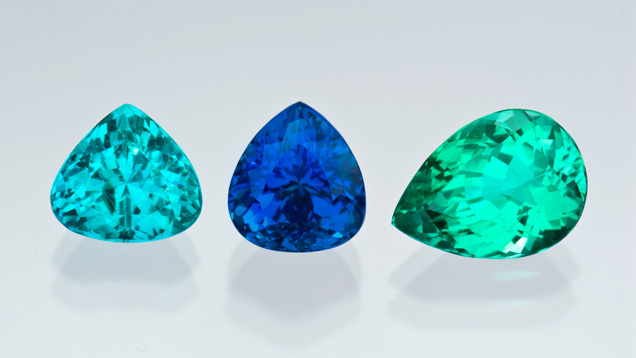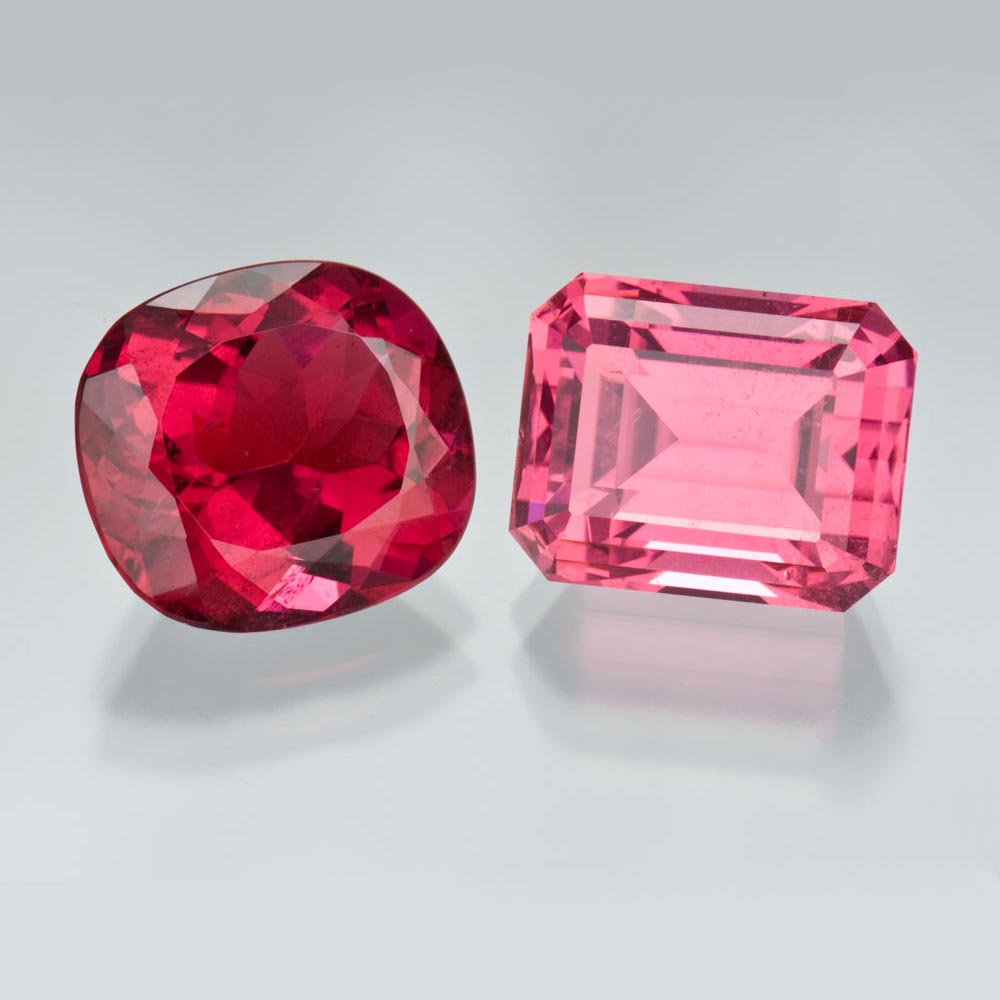Where in the world does tourmaline come from? Tourmaline deposits can be found in various locations around the world including the United States, Brazil, and Africa. Both Madagascar and Afghanistan are known for producing fine red tourmaline.
What color are tourmalines? Tourmaline can occur in any color. In fact, it has one of the widest color ranges of any gemstone. Certain colored tourmalines have their own trade names:
- Rubellite refers to the red variety of tourmaline.
- Indicolite indicates bluish-green tourmalines. And those that come from Paraiba, Brazil are referred to as Paraiba tourmaline.
- Chrome refers to any tourmaline that features an intense green color.
- Like its namesake, watermelon tourmaline has a pink center and green outer edge.
- Savannah refers to tourmaline gems that are bright yellow.
Where does a tourmaline’s color come from? A tourmaline’s color is caused by the presence of certain elements. For example, iron and titanium are believed to create green and blue tourmaline while manganese tends to produce red and pink tourmaline.
What color tourmaline is the most valuable? Any tourmaline is considered valuable when it features a saturated color, like the pink/red rubellites. However, high quality Paraiba can easily out-price other varieties of tourmaline, especially compared to other green and blue tourmaline gemstones. Their rarity and bright neon color make them one of the most sought after gemstones in the world.

Paraíba tourmaline gemstones.
What are the different varieties of tourmaline? Gemologists classify tourmaline gems into certain species based on their properties and chemical composition. These species include:
- Elbaite – rich in sodium, lithium, and aluminum.
- Liddicoatite – rich in calcium, lithium, and aluminum.
- Uvite – rich in calcium, magnesium, and aluminum.
- Dravite – rich in sodium, magnesium, and aluminum.
- Schorl – rich in iron and is typically black.
Can tourmaline jewelry be worn every day? With a rating between 7 and 7.5 on the Mohs scale of mineral hardness, tourmaline jewelry can be worn every day, but with caution. If you’re someone who works with your hands a lot, we suggest avoiding wearing any tourmaline rings to reduce the chance of accidentally bumping it against a hard object. Earrings and pendants are always safe options if you want to wear tourmaline jewelry every day.
How is tourmaline formed? Most tourmaline is formed when the right minerals (silicon, aluminum, boron, etc.) are present in the veins of igneous rocks called pegmatites.
What determines the value of a tourmaline? Like other gemstones, a tourmaline’s value is determined by its color, cut, clarity, and carat weight. The color is the most important factor when determining the value of a tourmaline. As stated before, those with intense, vivid colors, including rubellites and Paraibas demand the highest price tag. In regard to the other quality factors, tourmaline gems that have very few inclusions, are well-cut, and are large in size are the most valuable.
Does tourmaline symbolize anything? Tourmaline is one of two birthstones for the month of October (the other being opal). It is considered a gemstone of enlightenment and resolution and is believed to foster compassion, composure, and reflection. It is also believed to reveal the most captivating characteristics of those who wear it. If you’re looking to celebrate an 8th anniversary, tourmaline is the designated gemstone for you.
How should I care for my tourmaline jewelry? Clean your tourmaline jewelry with warm, soapy water or a mild detergent. Avoid wearing or storing your tourmaline jewelry in areas with excess heat, which can alter the color of the gem. Also, avoid wearing your tourmaline jewelry during days when you may experience sudden temperature changes, as this can cause fracturing.
Click here to view Kloiber Jewelers’ tourmaline jewelry collection.



